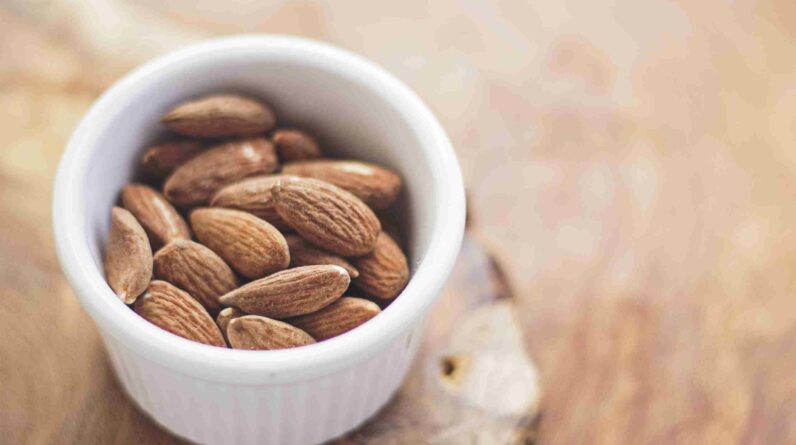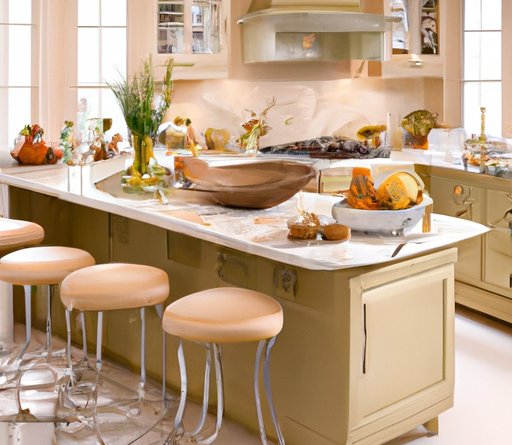Thinking about making a switch from a conventional oven to a toaster oven? Well, you’re in the right place! In this article, we’re going to explore the potential of using a toaster oven as a replacement for a traditional oven. Whether you’re low on kitchen space or simply looking for a more versatile cooking option, we’ve got you covered. Get ready to discover whether a toaster oven can meet all your baking, roasting, and toasting needs, without compromising on taste and convenience.
Advantages of Using a Toaster Oven
1.1 Versatility
One of the key advantages of using a toaster oven is its versatility. Unlike a conventional oven, a toaster oven allows for a wide range of cooking methods, including baking, broiling, toasting, and even roasting. This versatility makes it a great addition to any kitchen, especially for individuals or small families looking for a compact appliance that can handle various cooking tasks.
1.2 Energy Efficiency
Toaster ovens are known for their energy efficiency compared to conventional ovens. Since they are smaller in size, they require less time and energy to preheat, resulting in reduced energy consumption. Additionally, toaster ovens are designed to evenly distribute heat, ensuring that your food cooks thoroughly and efficiently. This not only saves energy but also cuts down on cooking time, which can be a significant advantage for busy households.
1.3 Space-saving
For those living in apartments or smaller homes, space is often a commodity. The compact size of toaster ovens makes them an excellent space-saving option compared to their larger counterparts. You can easily place a toaster oven on your countertop or tuck it away in a cabinet when not in use. This not only frees up valuable kitchen space but also allows for easy access and convenience during meal preparation.
1.4 Faster Cooking Time
Toaster ovens are renowned for their ability to cook food faster than conventional ovens. Their smaller size and efficient heating mechanics allow for quicker heat transfer, resulting in reduced cooking times. This feature is particularly useful when you’re in a hurry or need to prepare a quick meal. Whether it’s warming up leftovers or baking a small batch of cookies, a toaster oven can save you valuable time in the kitchen.
Limitations of Using a Toaster Oven
2.1 Smaller Capacity
While a smaller capacity can be an advantage in terms of space-saving, it can also be a limitation when it comes to cooking larger meals. Toaster ovens typically have a limited cooking space, which may not accommodate larger dishes or multiple items at once. This can be a drawback for bigger families or individuals who frequently cook for a larger group of people. However, if you’re cooking for one or two people, the smaller capacity may not be a significant issue.
2.2 Uneven Cooking
Due to their compact size, toaster ovens can sometimes result in uneven cooking. The heat distribution may vary within the small cooking chamber, which can lead to certain areas being hotter or cooler than others. This can be problematic, especially when baking or roasting delicate dishes that require consistent heat. To combat this limitation, it is essential to rotate the food during the cooking process and keep a close eye on its progress.
2.3 Limited Heating Options
Compared to a conventional oven, toaster ovens often offer limited heating options. While they excel in toasting and baking, they may not provide the same level of control or versatility in other cooking methods. For instance, broiling or grilling may not yield the desired results in a toaster oven due to limited heat intensity. However, for most everyday cooking needs, a toaster oven’s heating options are sufficient and can still produce tasty and satisfying meals.
2.4 Less Control over Temperature
Toaster ovens generally have fewer temperature controls and options compared to conventional ovens. While they typically have settings for specific cooking methods, such as baking or toasting, the temperature control may not be as precise or adjustable as in a conventional oven. This can be a slight limitation when it comes to more advanced cooking techniques that require specific temperature settings. However, for everyday cooking needs, the temperature control on a toaster oven is usually adequate.

Factors to Consider
3.1 Cooking Needs
When deciding whether or not to use a toaster oven as a replacement for a conventional oven, it is crucial to consider your cooking needs. Evaluate the types of dishes you typically prepare and whether a toaster oven can handle them effectively. If you frequently cook larger meals or require precise temperature control, a conventional oven may be a better option. However, if you primarily engage in baking, toasting, or small-scale cooking, a toaster oven can fulfill your needs admirably.
3.2 Space Availability
Another factor to consider is the availability of space in your kitchen. If you have limited counter space or a compact kitchen, a toaster oven’s smaller footprint can be a significant advantage. It allows you to save space while still enjoying the convenience of an oven. On the other hand, if you have ample space or a dedicated area for a larger oven, sticking with a conventional oven might be more practical.
3.3 Frequency of Use
Consider how often you use your oven. If you only use it occasionally or for smaller meals, a toaster oven can be a suitable alternative. Its faster preheating time and energy efficiency make it ideal for quick cooking tasks. However, if you rely heavily on your oven for frequent baking or cooking larger meals, a conventional oven may be more appropriate to ensure consistent results and accommodate larger quantities of food.
3.4 Budget Constraints
Budget is always an essential factor to consider when making any kitchen appliance purchase. Toaster ovens are generally more affordable than conventional ovens, making them an attractive option for those on a budget. Additionally, they consume less energy, which can lead to long-term cost savings on utility bills. However, if budget is not a significant concern, investing in a high-quality conventional oven may offer more features, capacity, and control over cooking processes.
Types of Toaster Ovens
4.1 Basic Toaster Oven
A basic toaster oven is a simple and affordable option for individuals or small families. It typically offers essential functions like toasting, baking, and broiling. Basic models may have limited temperature and cooking options but still provide reliable and efficient cooking performance. They are an excellent choice for those who primarily use their toaster ovens for basic cooking tasks or have budget constraints.
4.2 Convection Toaster Oven
A convection toaster oven takes cooking to the next level with the additional feature of a fan. This fan circulates hot air within the oven, resulting in faster and more even cooking. The convection feature improves heat distribution, reduces cooking time, and produces evenly browned and crispy results. Convection toaster ovens are a great option for those who enjoy baking, roasting, and require more control over their cooking processes.

Convection Toaster Oven vs. Conventional Oven
5.1 Heating Mechanism
Conventional ovens typically use heating elements at the top and bottom or surrounding the oven cavity to generate heat. In contrast, convection toaster ovens utilize a fan and additional heating elements to circulate hot air. This circulating air ensures consistent heat distribution and faster cooking times compared to conventional ovens. However, while both types of ovens have their unique heating mechanisms, the convection feature sets a toaster oven apart and provides added cooking benefits.
5.2 Cooking Performance
Convection toaster ovens offer superior cooking performance in terms of evenness and speed. The fan-driven air circulation prevents hotspots and uneven cooking, which can sometimes occur in conventional ovens. Additionally, the convection feature allows for faster cooking times, as the hot air surrounds the food and cooks it more efficiently. While conventional ovens still excel in some cooking aspects, such as baking large items or specialized techniques, convection toaster ovens provide consistent quality results for everyday cooking needs.
5.3 Energy Consumption
Energy consumption is an important consideration when comparing convection toaster ovens to conventional ovens. Convection toaster ovens are known for their energy efficiency, as the circulating hot air reduces the need for prolonged preheating. Additionally, the smaller size of toaster ovens means less space to heat, resulting in lower energy consumption overall. On the other hand, conventional ovens may use more energy due to their larger size and longer preheating times. Thus, if energy efficiency is a priority, a convection toaster oven is a favorable choice.
Recipes and Dishes Suitable for Toaster Oven
6.1 Baking Goods
Toaster ovens are excellent for baking a variety of goods, including cookies, muffins, cakes, and brownies. Their smaller size and even heat distribution allow for precise baking, ensuring evenly cooked and delicious treats. Whether you’re craving a batch of chocolate chip cookies or a moist banana bread, a toaster oven can easily handle these baking needs.
6.2 Casseroles and Roasts
Toaster ovens can also handle casseroles and roasts, although their smaller capacity may limit the quantity you can cook at once. However, if you’re cooking for a smaller group, toaster ovens can produce tender and flavorful casseroles or roasts. Keep in mind the limitations of uneven cooking, and be sure to rotate your dish during the cooking process for evenness.
6.3 Pizza and Toasts
Pizza and toasts are staple dishes that toaster ovens excel at. The direct heat and quick cooking time of a toaster oven ensure crispy and delicious pizza crusts. Additionally, toasting bread or bagels to perfection is a breeze. Whether you’re making a quick snack or preparing a breakfast spread, a toaster oven is a versatile tool for achieving perfectly toasted and mouthwatering results.

Tips for Using a Toaster Oven as a Replacement
7.1 Adjusting Cooking Time and Temperature
Toaster ovens may require slight adjustments in cooking time and temperature compared to conventional ovens. Since toaster ovens are smaller and heat up quickly, you may need to reduce the cooking time slightly or lower the temperature to prevent overcooking. It is essential to keep an eye on your food during the cooking process and make necessary adjustments to ensure optimal results.
7.2 Positioning and Preheating
Proper positioning and preheating are crucial for effective cooking in a toaster oven. Place your food in the center of the oven to ensure even heat distribution. Additionally, preheating the toaster oven before cooking helps maintain consistent cooking temperature and improves the overall cooking performance. Following these positioning and preheating tips will ensure that your dishes are cooked evenly and properly.
7.3 Using Proper Cookware
Using the right cookware is essential when using a toaster oven. Opt for cookware that is compatible with toaster ovens, such as metal or glass baking pans, sheets, and oven-safe dishes. Avoid using plastic or non-oven-safe materials, as they can melt or warp under high heat. Using proper cookware ensures safe and efficient cooking in your toaster oven.
Maintenance and Safety Precautions
8.1 Cleaning and Maintenance
Regular cleaning and maintenance are necessary to keep your toaster oven in optimal working condition. Refer to the manufacturer’s instructions for specific cleaning guidelines. Generally, cleaning the crumb tray, wiping down the interior with a damp cloth, and using non-abrasive cleaners are effective methods to maintain cleanliness. Additionally, periodically checking and replacing any damaged heating elements or components will ensure safe and efficient operation.
8.2 Safely Handling Hot Surfaces
Toaster ovens have hot surfaces that must be handled with caution. Always use oven mitts or heat-resistant gloves when touching or removing hot items from the toaster oven. Be mindful of children and pets to prevent accidental burns or injuries. Take necessary precautions to avoid direct contact with hot surfaces and always prioritize safety when using your toaster oven.
8.3 Avoiding Overloading the Circuit
Toaster ovens, like any other electrical appliance, require proper electrical usage. To prevent overloading the circuit, avoid using multiple high-energy appliances simultaneously with your toaster oven. Placing the toaster oven on a dedicated circuit or using it as the only high-energy appliance on a circuit will minimize the risk of tripped breakers or electrical hazards.
Conclusion
In conclusion, using a toaster oven as a replacement for a conventional oven can be a practical and efficient choice for many individuals and families. The advantages of versatility, energy efficiency, space-saving, and faster cooking time make toaster ovens a valuable addition to any kitchen. However, it is essential to consider the limitations, such as smaller capacity, uneven cooking, limited heating options, and less control over temperature, when deciding on this appliance.
Factors such as cooking needs, space availability, frequency of use, and budget constraints should be taken into account when considering a toaster oven as a replacement. Understanding the different types of toaster ovens, such as basic and convection models, can further help in making an informed decision.
Toaster ovens are well-suited for baking goods, casseroles, roasts, pizza, and toasting, making them versatile for a variety of recipes and dishes. Some additional tips for using a toaster oven as a replacement include adjusting cooking time and temperature, proper positioning and preheating, and using suitable cookware.
Maintenance and safety precautions, such as regular cleaning and maintenance, safely handling hot surfaces, and avoiding overloading the circuit, are crucial for maintaining the longevity and safety of your toaster oven.
In summary, while toaster ovens have their limitations, they offer numerous advantages, making them a viable alternative to conventional ovens in many situations. With careful consideration of your cooking needs and the appropriate usage, a toaster oven can be a valuable and convenient tool in your culinary endeavors.










